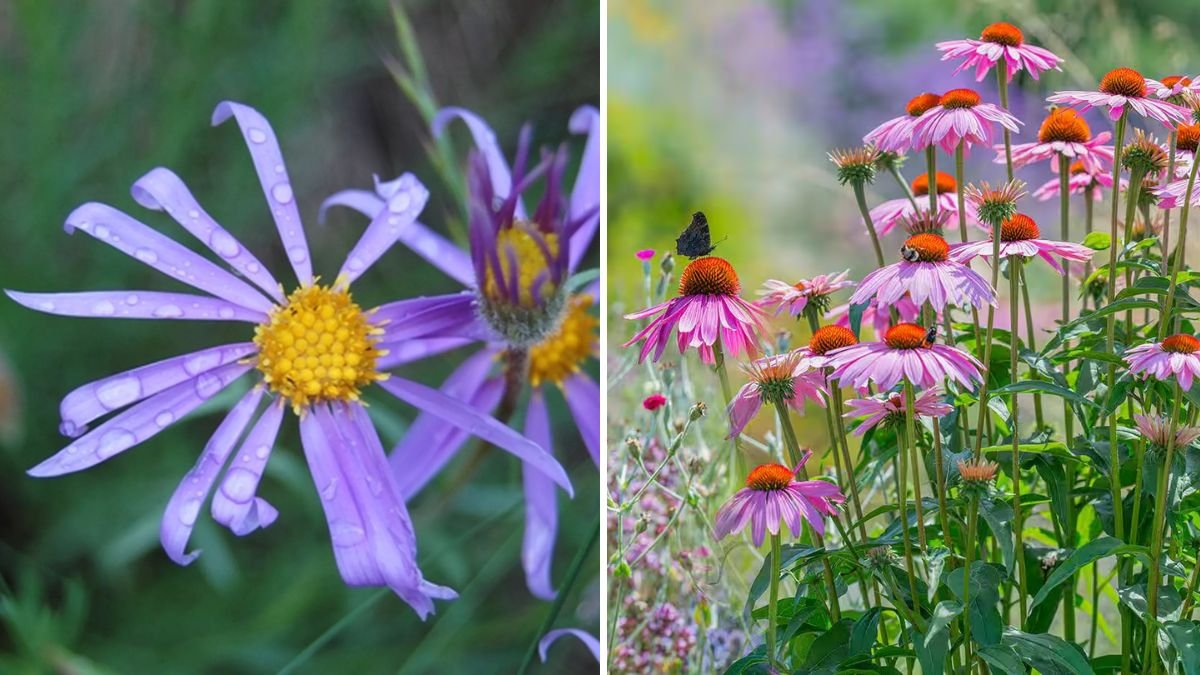Pollinators—such as bees, butterflies, hummingbirds, and other beneficial insects—play a critical role in maintaining healthy ecosystems. They are responsible for pollinating flowers, fruits, and vegetables, ensuring biodiversity and food production. One of the most effective ways to support pollinators is by planting native wildflowers, which are adapted to local conditions and provide essential nectar, pollen, and habitat.
This guide highlights ten native wildflowers that attract pollinators instantly, along with detailed care tips for creating a thriving, pollinator-friendly garden.
1. Black-Eyed Susan (Rudbeckia hirta)
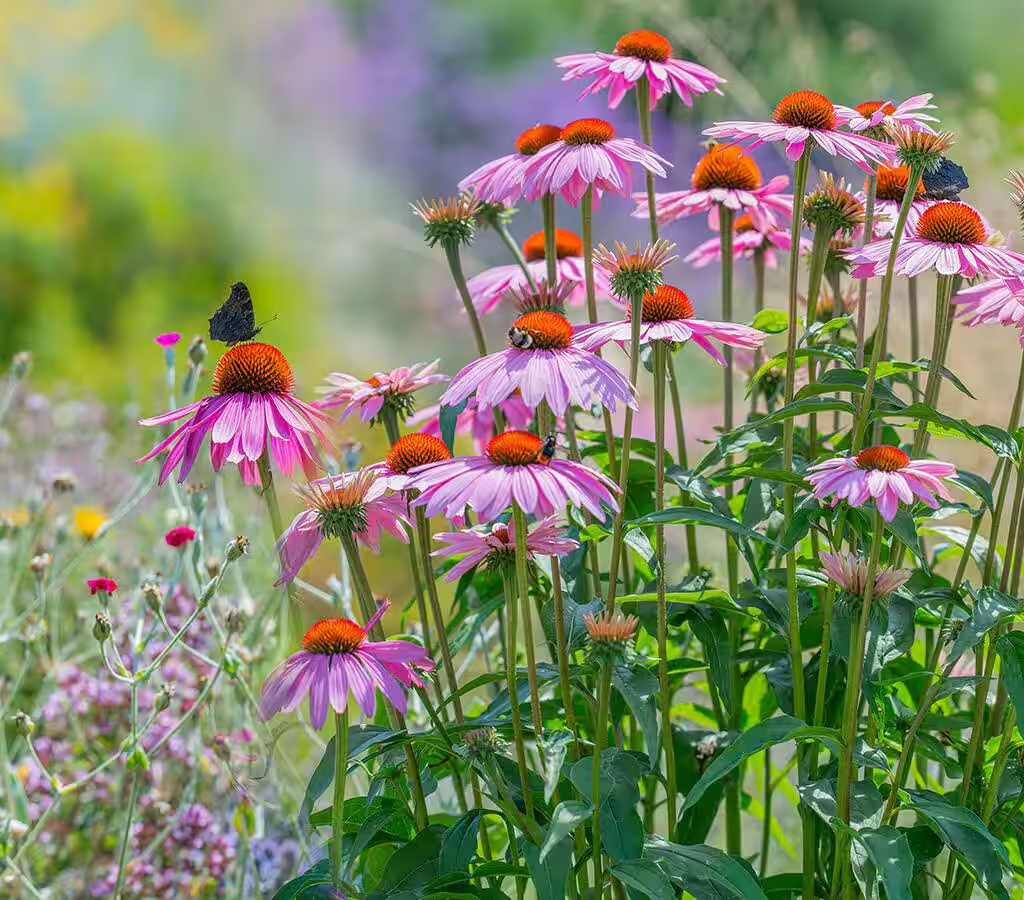
Why It Attracts Pollinators
- Produces bright yellow flowers with dark centers that are highly visible to bees and butterflies.
- Blooms continuously throughout the summer, providing long-lasting nectar sources.
- Native to many regions in North America and hardy in various soil types.
Care Tips
- Sunlight: Full sun for optimal growth.
- Watering: Moderate; drought-tolerant once established.
- Soil: Well-draining soil with moderate fertility.
- Maintenance: Deadhead to encourage prolonged blooming.
Bonus: Black-Eyed Susans are easy to grow from seeds and provide vibrant summer color.
2. Purple Coneflower (Echinacea purpurea)
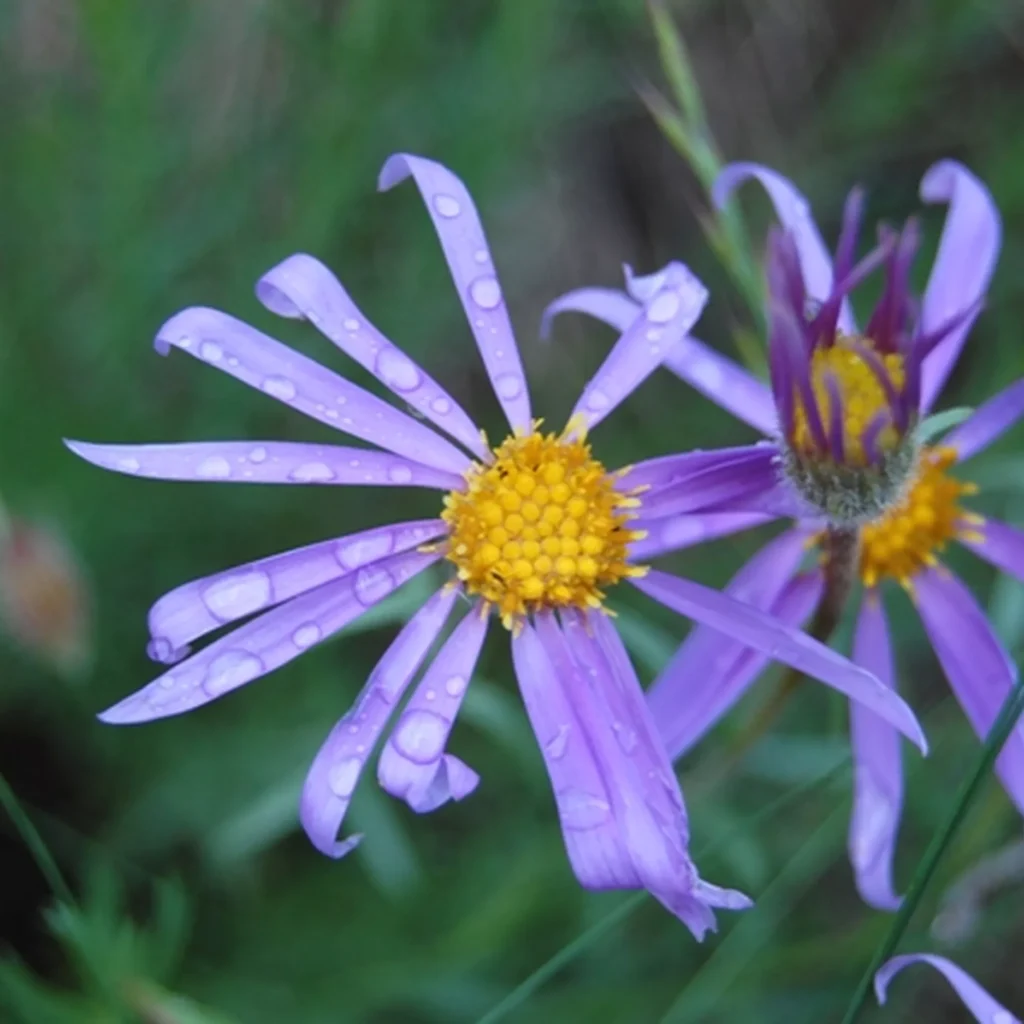
Why It Attracts Pollinators
- Features striking purple petals and a spiky orange center that draws bees, butterflies, and hummingbirds.
- Long blooming season from mid-summer to early fall.
- Known for medicinal properties, making it a dual-purpose garden plant.
Care Tips
- Sunlight: Full sun; tolerates partial shade.
- Watering: Moderate; drought-tolerant once established.
- Soil: Well-draining soil; adapts to rocky or sandy soils.
- Maintenance: Cut back in late fall to prepare for winter growth.
Bonus: Coneflowers attract a variety of pollinators while adding vertical interest to garden beds.
3. Milkweed (Asclepias spp.)
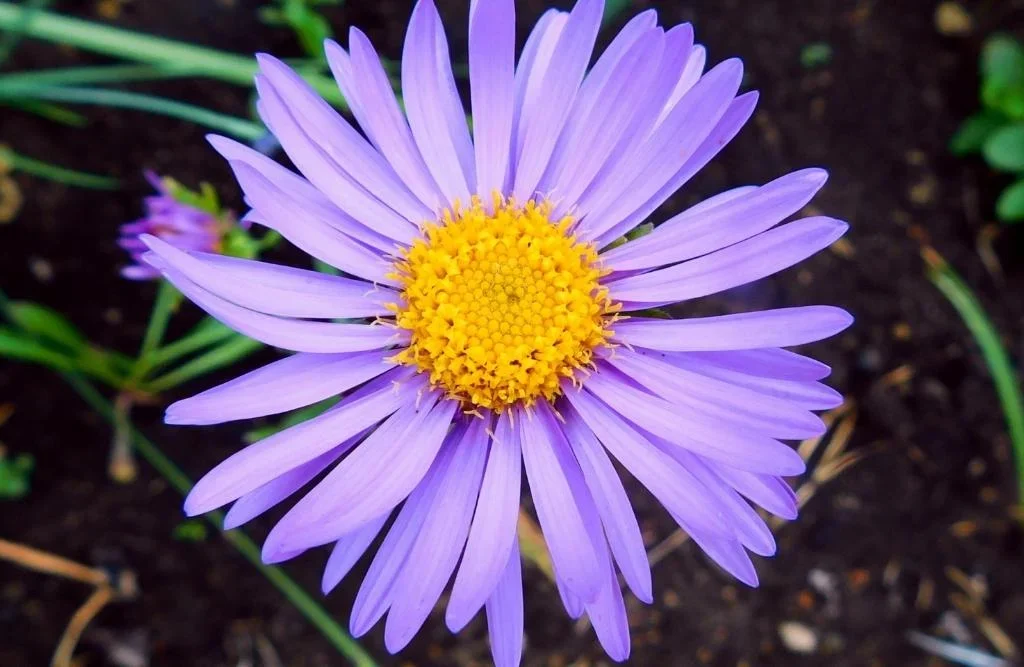
Why It Attracts Pollinators
- Essential host plant for monarch butterflies, providing both nectar and habitat for larvae.
- Produces clusters of fragrant flowers in pink, orange, or white.
- Highly attractive to bees, hummingbirds, and other butterflies.
Care Tips
- Sunlight: Full sun is ideal.
- Watering: Low to moderate; drought-tolerant once established.
- Soil: Well-draining soil; adapts to various soil types.
- Maintenance: Cut back stems in early spring to promote healthy new growth.
Bonus: Planting milkweed supports pollinator conservation and monarch butterfly populations.
4. Bee Balm (Monarda didyma)
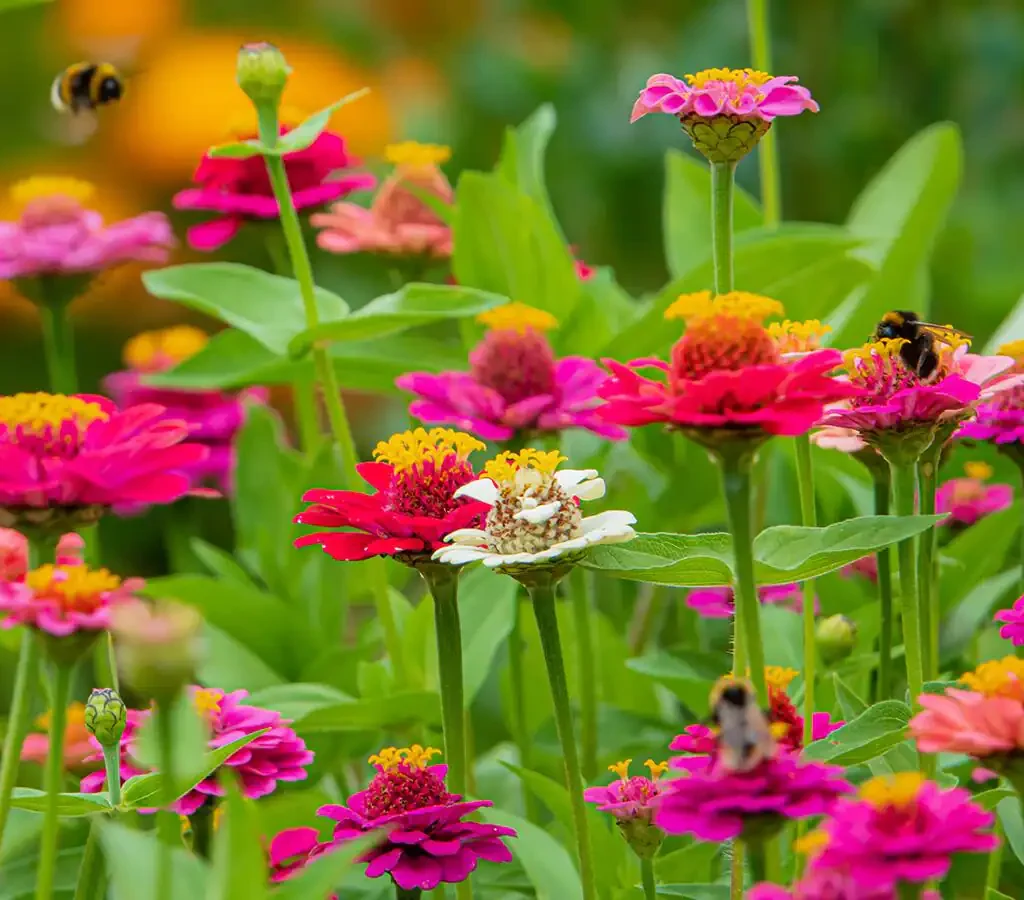
Why It Attracts Pollinators
- Produces bright red, pink, or purple tubular flowers that are a magnet for bees, hummingbirds, and butterflies.
- Aromatic foliage repels pests naturally.
- Blooms from summer to early fall, providing continuous nectar.
Care Tips
- Sunlight: Full sun to partial shade.
- Watering: Moderate; prefers moist but well-draining soil.
- Soil: Fertile soil enriched with organic matter.
- Maintenance: Divide plants every 2–3 years to prevent overcrowding.
Bonus: Bee Balm adds vivid color and fragrance while actively supporting pollinators.
5. Blanket Flower (Gaillardia spp.)
Why It Attracts Pollinators
- Heat-tolerant and sun-loving perennial with vivid red, yellow, and orange flowers.
- Long blooming season attracts bees, butterflies, and hummingbirds.
- Thrives in poor, well-draining soil.
Care Tips
- Sunlight: Full sun is essential.
- Watering: Low; drought-tolerant once established.
- Soil: Well-draining sandy or rocky soils.
- Maintenance: Deadhead to prolong flowering.
Bonus: Blanket Flowers are low-maintenance and resilient, perfect for hot, sunny pollinator gardens.
6. Wild Bergamot (Monarda fistulosa)
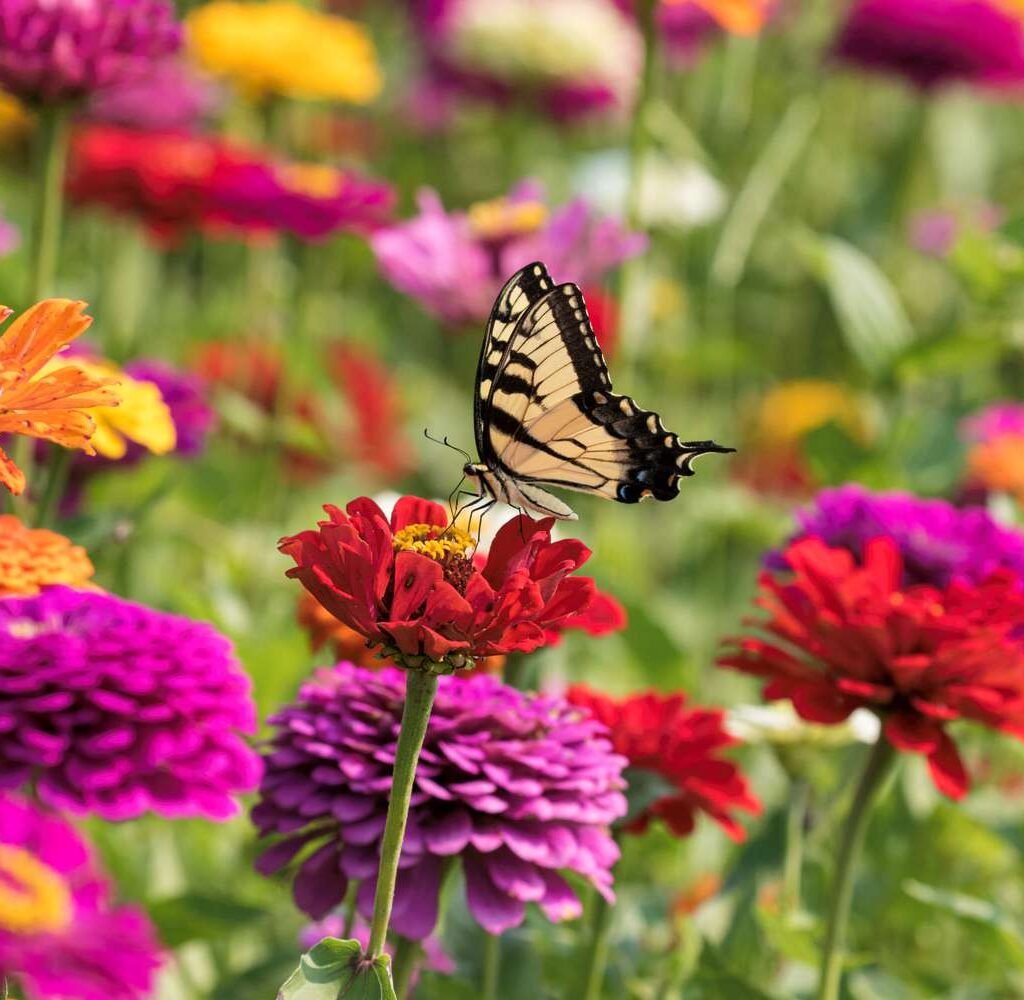
Why It Attracts Pollinators
- Produces lavender-pink flowers with a minty fragrance.
- Nectar-rich blooms attract bees, butterflies, and hummingbirds.
- Provides structural beauty in wildflower or native gardens.
Care Tips
- Sunlight: Full sun to partial shade.
- Watering: Moderate; prefers moist soil but tolerates drought.
- Soil: Well-draining soil with average fertility.
- Maintenance: Cut back after flowering to maintain shape and vigor.
Bonus: Wild Bergamot’s minty aroma and pollinator appeal make it a dual-purpose garden plant.
7. Coreopsis (Coreopsis spp.)
Why It Attracts Pollinators
- Also called tickseed, Coreopsis produces bright yellow or red blooms that last all summer.
- Nectar-rich flowers attract bees, butterflies, and hummingbirds.
- Extremely hardy and tolerant of poor soils, making it ideal for wildflower meadows.
Care Tips
- Sunlight: Full sun for vibrant blooms.
- Watering: Low; drought-tolerant once established.
- Soil: Well-draining soil; tolerates rocky or sandy conditions.
- Maintenance: Deadhead regularly for continuous flowering.
Bonus: Coreopsis adds long-lasting color and resilience to pollinator gardens.
8. Goldenrod (Solidago spp.)
Why It Attracts Pollinators
- Goldenrod produces dense spikes of bright yellow flowers, highly attractive to bees, butterflies, and beneficial insects.
- Blooms in late summer, extending the nectar season.
- Native to many regions and well-adapted to various soil types.
Care Tips
- Sunlight: Full sun to partial shade.
- Watering: Low; drought-tolerant.
- Soil: Adaptable to poor, rocky, or sandy soils.
- Maintenance: Cut back after flowering to encourage new growth and prevent self-seeding.
Bonus: Goldenrod is a pollinator magnet that also adds late-season color to gardens.
9. Lupine (Lupinus spp.)
Why It Attracts Pollinators
- Lupines produce tall, spiky flowers in shades of blue, purple, pink, and white, which are highly attractive to bees and butterflies.
- Nitrogen-fixing roots improve soil fertility, benefiting neighboring plants.
- Thrives in sunny, well-draining areas.
Care Tips
- Sunlight: Full sun for best blooms.
- Watering: Moderate; avoid waterlogged soil.
- Soil: Sandy or rocky soil preferred; ensure good drainage.
- Maintenance: Cut back after flowering to encourage rebloom and prevent overcrowding.
Bonus: Lupines not only attract pollinators but also improve soil quality naturally.
10. Blanketflower’s Cousin: Firewheel (Gaillardia pulchella)
Why It Attracts Pollinators
- Firewheel produces bright red and yellow daisy-like blooms that attract bees, butterflies, and hummingbirds.
- Drought-tolerant and thrives in poor soils.
- Long blooming season from early summer to fall.
Care Tips
- Sunlight: Full sun is required for vibrant color.
- Watering: Low; drought-tolerant.
- Soil: Well-draining sandy or rocky soils.
- Maintenance: Deadhead to encourage more flowers and maintain appearance.
Bonus: Firewheel’s striking bicolor flowers make it a visually appealing and pollinator-friendly choice.
General Tips for Attracting Pollinators With Native Wildflowers
- Group Plants: Plant clusters of the same species to make them more attractive to pollinators.
- Provide Water Sources: Small birdbaths or shallow water dishes help sustain pollinators.
- Avoid Pesticides: Minimize chemicals that can harm beneficial insects.
- Mix Flowering Times: Plant species that bloom at different times to provide continuous nectar throughout the season.
- Include Host Plants: Plants like milkweed provide food for larvae, enhancing pollinator populations.
Following these tips ensures a thriving garden ecosystem that benefits both pollinators and humans.
Conclusion: Create a Pollinator Paradise
By planting Black-Eyed Susans, Purple Coneflowers, Milkweed, Bee Balm, Blanket Flower, Wild Bergamot, Coreopsis, Goldenrod, Lupines, and Firewheel, gardeners can instantly attract pollinators and beneficial insects. These native wildflowers are adapted to local climates, require minimal maintenance, and provide continuous blooms, making them ideal for creating a colorful and lively garden.
A pollinator-friendly garden not only enhances biodiversity but also contributes to healthy ecosystems and improved yields in vegetable and fruit gardens. Choosing native wildflowers ensures that your garden thrives naturally while supporting pollinator populations, making it a sustainable and beautiful space that delights both humans and wildlife.
